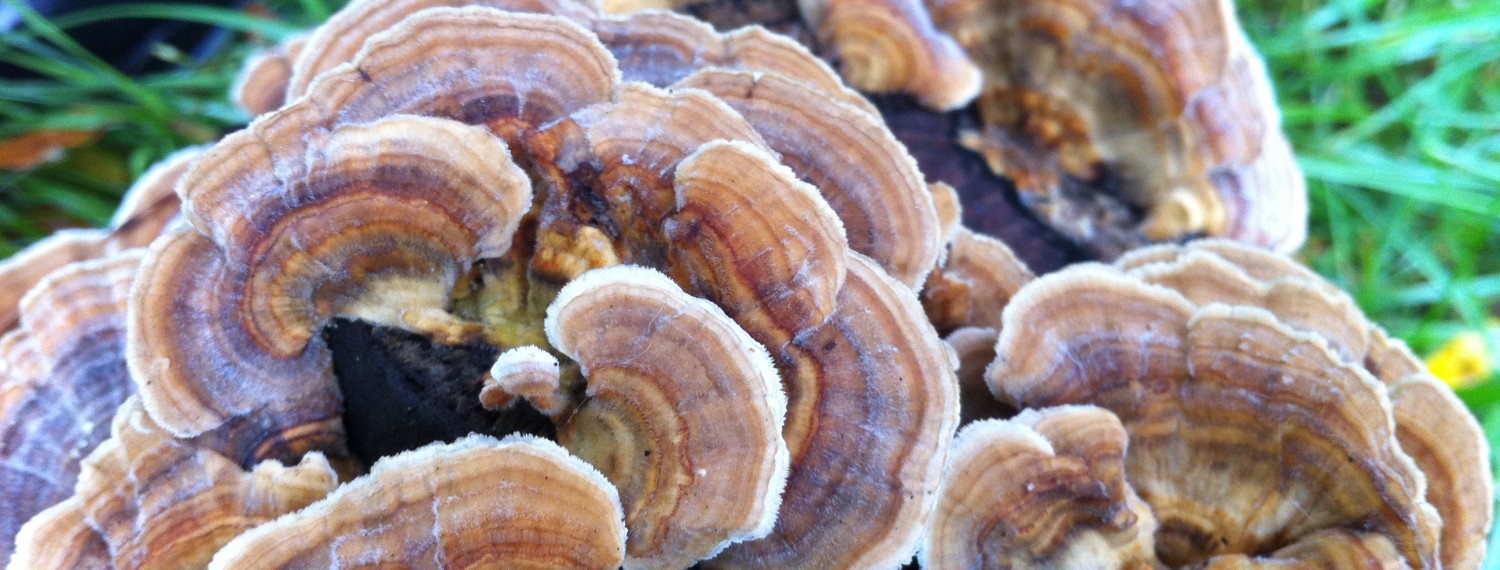Yesterday we went to see Steven Martyn of the Sacred Gardener giving a talk called “Dancing with Lyme“. Steven is an experienced herbalist who has personally experienced Lyme in the long term. He first acquired it while camping in Florida, and after initially suppressing it with pharmaceutical antibiotics, it resurfaced (or he re-acquired it) about a decade later. With the help of his colleagues who shared their knowledge based on recent advances in the understanding of how the infection works, he is now symptom-free. He does not discount the possibility that the bacteria may still be in his body in its encysted, dormant form.
I will report what I can recall of his account, as he had a lot of useful insights and references. I also added some links of my own. After that I’ll add what I have found in reference to mushrooms which might also help in the prevention and cure of Lyme, because Steven’s expertise in mostly in the area of herbs.
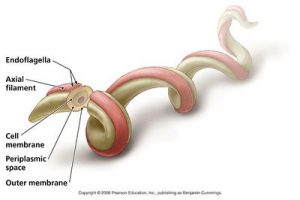 Lyme disease, also known as Lyme borreliosis, is an infectious disease caused by bacteria of the Borrelia type. It is a spirochetal (corkscrew-shaped) bacterium which is extremely fast and capable of drilling itself into tissues to avoid detection by the immune system. It targets inflammation in joints and nerve tissue, taking advantage of existing conditions like candida, arthritis, and congenital predispositions, like nerve problems.
Lyme disease, also known as Lyme borreliosis, is an infectious disease caused by bacteria of the Borrelia type. It is a spirochetal (corkscrew-shaped) bacterium which is extremely fast and capable of drilling itself into tissues to avoid detection by the immune system. It targets inflammation in joints and nerve tissue, taking advantage of existing conditions like candida, arthritis, and congenital predispositions, like nerve problems.
These bacteria are carried between species by black legged, or deer ticks. The nymphs hatch from the eggs uninfected, but can acquire the bacteria from the small rodents on which they pass their first stage of feeding. The tick then lies in wait for a larger animal: a deer, a dog, or you. As the tick begins feeding, the bacteria react to the first blood “analyzing” the immune response and adapting itself to attack or evade, your specific defenses. Individuals with compromised immune systems, whether through emotional or physical stress, genetic predisposition, poor diet, or preexisting infections etc., are more susceptible.
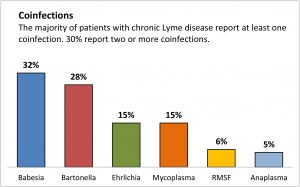 In addition to Lyme, ticks (being the filthy little creatures they are) are usually carrying one or more other bacteria (Babeia, a malaria-like parasite, Bartonella, bacteria that live primarily inside the lining of the blood vessels and more) so that a majority of those infected by Lyme report co-infections of one or more other pathogens. Lyme takes advantage of the inflammations caused by these co-infections. And of course these diseases have there own symptoms.
In addition to Lyme, ticks (being the filthy little creatures they are) are usually carrying one or more other bacteria (Babeia, a malaria-like parasite, Bartonella, bacteria that live primarily inside the lining of the blood vessels and more) so that a majority of those infected by Lyme report co-infections of one or more other pathogens. Lyme takes advantage of the inflammations caused by these co-infections. And of course these diseases have there own symptoms.
It should be noted that Steven and all the experts he cited said that if you have been bitten by a deer tick to immediately go to emergency for treatment with antibiotics. If the course they offer is less, go to your doctor and get it extended to 18-21 days. Unfortunately sometimes the bacteria may survive the treatment and emerge later, in which case further treatment with antibiotics may prove ineffective. The treatments mentioned below can be used in conjunction with conventional medicine, but consult your doctor.
Steven’s main treatment reference is a book by Stephen Harrod Buhner called Healing Lyme. Buhner’s protocol is outlined on his site. Steven also got a lot of help from Stephen O’Neill at the Ontario Lyme disease Clinic and Dr. Maureen McShane.
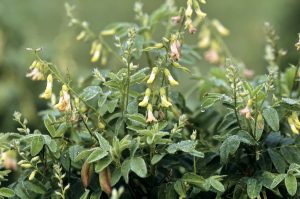 For prevention they recommend Astragalus (available as dried herb, seeds, or young plants from Ritcher’s). Treatments for active Lyme include Teasel, Cat’s Claw, Japanese Knotweed Root (get it from a neighbor who is battling the stuff), Artemisia (Wormwood), Clivers and Andrographis. Buhner recommends drawing out the spirochetes (with teasel tincture), and rebuilding your collagen, before killing them.
For prevention they recommend Astragalus (available as dried herb, seeds, or young plants from Ritcher’s). Treatments for active Lyme include Teasel, Cat’s Claw, Japanese Knotweed Root (get it from a neighbor who is battling the stuff), Artemisia (Wormwood), Clivers and Andrographis. Buhner recommends drawing out the spirochetes (with teasel tincture), and rebuilding your collagen, before killing them.
Buhner has a page recommending herb sources on his site (probably US suppliers), and Steven Martyn recommends Organic Connections, Wainfleet, Herbies Herbs, Toronto, Judy’s Organic Herbs, Ottawa (who has a line of Buhner remedies), and Amazon. With the Ontario companies tell them that Steven From Algonquin Tea sent you and outright demand the best herbs.
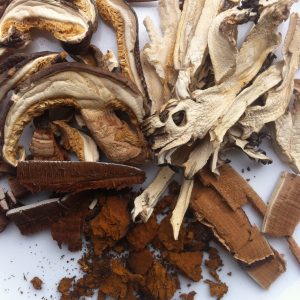 For fighting Lyme, Steven recommended a diet that avoids sugar and processed carbs; even maple syrup, fruit or sweet corn. Concentrate, instead, on high quality proteins and fats. Astragalus is food herb that boosts the immune system which can also be added to dishes as a thickener. Hot baths, showers, saunas help make the body inhospitable to the germs, and movement like Tai Chi, yoga or exercise helps clear the lymph system of the waste byproducts of the immune response.
For fighting Lyme, Steven recommended a diet that avoids sugar and processed carbs; even maple syrup, fruit or sweet corn. Concentrate, instead, on high quality proteins and fats. Astragalus is food herb that boosts the immune system which can also be added to dishes as a thickener. Hot baths, showers, saunas help make the body inhospitable to the germs, and movement like Tai Chi, yoga or exercise helps clear the lymph system of the waste byproducts of the immune response.
Steven’s talk prompted me to do a bit of quick, research on recommendations for specific mushrooms to treat Lyme disease. To be honest, I should have looked this up before, as Lyme is endemic in the area.
The sites I found were mostly anecdotal, but a quick glance over the offerings finds the regular suspects  recommended: Chaga*, Shiitake, Maitake*, Reishi, and Coryceps. I’m curious about the possibilities for Artists’ Conk*, Tinder Fungus* and Birch Polypore* because they are also found in the woods* where the ticks hang out, and my mother taught me that the cure is often found near the cause (like nettles and dock). According to The Fungal Pharmacy they are all anti-inflammatory, anti-bacterial, analgesic, and immune boosting.
recommended: Chaga*, Shiitake, Maitake*, Reishi, and Coryceps. I’m curious about the possibilities for Artists’ Conk*, Tinder Fungus* and Birch Polypore* because they are also found in the woods* where the ticks hang out, and my mother taught me that the cure is often found near the cause (like nettles and dock). According to The Fungal Pharmacy they are all anti-inflammatory, anti-bacterial, analgesic, and immune boosting.
It is interesting to note that analysis of the body of Otzi the 5300 year-old mummy found frozen in an Alpine glacier indicates that he had Lyme Disease as well as an intestinal parasite called whip worm. He was found in possession of both Tinder and Birch Polypores, an indication perhaps that our stone aged ancestors knew something about the potential of these fungi to aid the body in suppressing parasites and bacterial infections.
One site that lists similar herbal treatments to what Steven 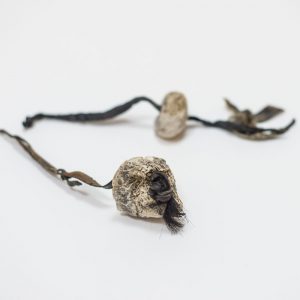 recommends as well as some mushroom extracts is Restor Medicine. Julie Daniluk, the popular anti-inflammatory nutritionist has some recommendations on supplements for Lyme Support on her website.
recommends as well as some mushroom extracts is Restor Medicine. Julie Daniluk, the popular anti-inflammatory nutritionist has some recommendations on supplements for Lyme Support on her website.
We’ll be taking Sacred Gardener’s Astragalus tincture along with our regular Chaga and Turkey Tail. I also keep a brew of Immune Boosting Tea on the slow cooker with the addition of Birch polypore. We will also be starting a dedicated garden for the herbs mentioned above.
UPDATE: I currently take a mushroom tincture combination of Chaga, Artists Conk, Maitake and Birch polypore, and a herbal tincture of Astragalus, Artemesia, Cleavers, Dandelion, Knotweed, and Teasel.
